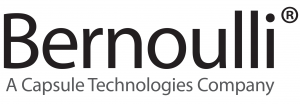
Making the Connection: How to Preserve Human-Centered Care in the Digital Age
Guest Blog by Dr. Nat’e Guyton, RN, MSN, CPHIMS, NE-BC
Continuous clinical surveillance has been the exclusive domain of hospital departments such as the ICU that care for patients who have the greatest risks for deterioration.
The alignment of a number of factors, however, has made this capability a credible contender for broader utilization across the enterprise:
- Healthcare industry leaders, including advocates, associations, and regulators, are increasingly calling for broader utilization of continuous surveillance, especially for patients at risk for hospital-acquired illnesses, such as opioid-induced respiratory depression and sepsis.
- Peer-reviewed research and use cases are beginning to demonstrate the efficacy of continuous surveillance in helping both remote and bedside clinicians anticipate the early signs of patient decline and intervene well before a sentinel event occurs or expensive escalations to intensive care are required.
- Advances in monitoring technology and sophisticated analytics show promise for scaling continuous surveillance to a number of patient care departments, including telemetry, maternity, and med-surg.
- Recent market analysis suggests that the ability to power surveillance and real-time patient care initiatives with electronic health record systems and primarily deploying existing monitoring infrastructure can positively impact both hard and soft ROI.
- Hospital investments in clinical surveillance and analytics solutions are driven by organizations that are migrating toward value-based care models and are trying to achieve the objectives of value-based care, including improving care quality and outcomes, reducing clinical variation, and costs.
However, all of this positive forward momentum is blunted by the fact that broad-scale continuous surveillance, like any major implementation, comes with significant challenges, especially in the areas of communication and workflow.
Smoothing Technology Friction
Healthcare technology is largely perceived—and marketed—as a net-positive. However, technology implemented without proper consideration of impacts on workflow and end-users’ ability to fulfill their core responsibilities can have harmful effects on its overall efficacy.
In fact, nurses may perceive a new technology as something that only contributes to fatigue, burnout, and unproductive workflows. It’s easy for hospital decision-makers to overlook this, but an implementation’s impact on workflow should not be minimized; it will largely define how data are collected, displayed, and how alarm signals are communicated and to whom. As such, hospitals should incorporate clinical workflow as quickly and as early as possible in the process.
Take the issue of alarm management. Nursing staff are charged with responding promptly when patient monitoring devices send an alert. As the presence of alarm equipment continues to grow, nurses find their workflow and ability to engage with patients disrupted as they chase down hundreds of alarms, most of which require no intervention with the patient. Smart alarm technology identifies clinically actionable events and significantly reduces the overall number of alarms—
How a new technology interacts with other systems—including electronic health records (EHRs) and communications—also is critical. For example, the EHR is the beating heart of most hospitals’ clinical operations. A solution that does not or cannot integrate with the EHR is unlikely to mitigate the major sources of stress in the clinician’s day.
Similarly, how data is analyzed, aggregated, displayed, and communicated—especially to remote care team members—can largely define the success or failure of a technology like continuous surveillance.
Retaining the Human Touch
In addition to enhanced patient safety and improved clinical communication, technology should enable nurses and physicians to spend more time interacting with patients. Many nurses end their shifts realizing that direct patient care made up only a small percentage of their day.
However, high-quality nurse-patient interactions have shown to positively affect both patient satisfaction and their perception of the amount of time spent engaging with nurses. Higgins, et. al, observed that “patients reported that an average of 74 minutes with their assigned nurse, and 90 percent rated their satisfaction with that amount of time as excellent or good,” even though observers noted the nurses’ actual time spent interacting with patients was half that estimate.
A Step in the Right Direction
Successfully expanding the utilization of continuous surveillance beyond the ICU is a process that can be complex, disruptive and bring new uncertainties to the entire organization.
It’s easy to consider a new hardware or software solution and imagine its transformative potential. Healthcare tradeshows brim with thousands of devices, enterprise systems, and software applications marketed as painless solutions for any clinical challenge facing a hospital or care unit. But a poorly implemented system that did not evaluate the impact to the clinical workflow can just as easily exacerbate inefficiencies and reduce the overall quality of patient care.
Involving direct-care staff is critical to the success of any new technology. How will this new technology impact how nurses deliver patient care? What adjustments in workflow and practice need to be made—at go-live and beyond? Starting with these questions fosters buy-in from the staff who will be utilizing this equipment.
Hospitals should incorporate clinical workflow as quickly and as early as possible in the process. Designating a nursing champion—or super-user—at the outset allows other nurses and direct-care clinical staff to receive information, training, and support during all phases of adoption.
The key to preserving human-centered care in the digital age is to make humans the center of all care processes.
About the Author:

Dr. Nat’e Guyton,
RN, MSN, CPHIMS, NE-BC,
is Chief Nursing Officer of Spok,
the leader in clinical communication solutions. Dr. Guyton is a nurse and clinical leader with over 15 years of healthcare experience.

